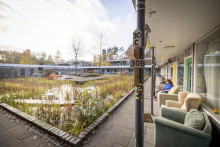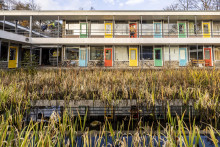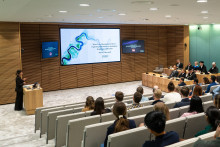After UT announced 117 new student homes, I wrote on LinkedIn: ‘The best way to solve the housing crisis is to build more homes – not block students who want to educate themselves and contribute to the Netherlands.’ That’s at the heart of this piece. The annual panic isn’t a culture problem; it’s a capacity problem superimposed on a university timetable.
Every September, the same ritual unfolds. New students arrive; group chats light up with room requests; a few familiar voices ask if ‘internationalisation went too far’. It’s a tidy story. It’s also the wrong one. What we’re looking at is a national capacity gap colliding with a university timetable – a logistics problem dressed up as a culture debate.
Too many students? No, not enough keys
Zooming out… The Netherlands is short roughly four hundred thousand homes; about a mid-sized city’s worth of front doors. You don’t wish away that deficit with an indefensible deflection of the issue at hand. Optimistically, it is closed with permits, cranes, and keys.
Zooming in… On campuses, the shortage turns high-definition because demand arrives on a fixed date with suitcases. The latest national monitor shows that only 44% of Dutch students now live away from home, down from 52% eight years ago, even though 49% say they want to. Kences estimates a student room gap of ~21,000 at this very moment.
And supply is going the wrong way: last year only about 5,000 rooms were added, while more disappeared as private landlords exited, leaving ~13,500 fewer rooms across the twenty student cities and 17,800 fewer students housed in the private sector. Flow-through is jammed: 57% of graduates are still in their student rooms one year after graduating because the wider market has nowhere to receive them. That isn’t ‘too many students’; it’s too few keys in price bands students can actually afford.
Training a future workforce
So why does the conversation keep drifting toward cutting back the very cohorts we recruit? Because when there aren’t enough chairs, people start arguing about who should sit, rather than asking why we bought so few chairs. Blaming ‘internationalisation’ is narratively easy. Explaining build pipelines, planning risk, and mid-market financing is not. But only one of those explanations leads to more keys.
And here’s the part we shouldn’t gloss over: students are not a cost centre; they’re a pipeline, the future of an ageing society. The Netherlands is not ‘hosting’ a transient crowd; it’s training its future workforce. We know this empirically. Of recent cohorts, 57% of international graduates are still here one year after graduating, and about 25–26% remain after five years – the large majority of them in paid jobs by then. These are the engineers, teachers, and researchers who will power the labs and firms in Twente and the rest of the Netherlands. Shielding students while we expand capacity isn’t charity, It’s strategy.
Reputation
There’s also the reputational angle. ‘We can’t house you’ is not a compelling pitch to Dutch students choosing between cities, nor to international candidates choosing between countries. A university/city that struggles to match people with square meters starts bleeding credibility. Companies notice, research partners notice, and the next cohort definitely notices.
What would a grown-up framing look like? Name the issue plainly: too little housing colliding with a predictable September surge. Universities don’t control zoning or permits, but they still take the heat each year. Keep debates about programme design, how many internationals, and language where they belong – on academic grounds, not as a proxy for housing policy. And run two tracks at once: protect students now (clear information, fair leasing conditions, decent temporary options) while building for tomorrow (more affordable apartments, delivered fast).
Build the beds, keep the brains
Of course, it is not just about adding capacity. The Netherlands has a long tradition of architectural ingenuity and sustainable building practices: from energy-neutral housing to circular construction methods. Expanding capacity with these approaches ensures we grow smarter, not just bigger.
If the Netherlands can design quantum chips and launch climate satellites, it can assemble enough apartments for the talent it invites. That’s the promise of a knowledge economy: you build the physical capacity that lets the human capacity flourish. Or, to put it less politely: build the beds, keep the brains. Everything else is background noise.
Written in a personal capacity, inspired by Prof. Gijs Krijnen, RAM group, Mentor
Dr. Prasanth Venugopal, Associate Professor of Battery Power Electronics, University of Twente







